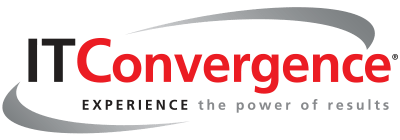Healthcare organizations face a unique challenge: ensuring the right workforce is available, equipped, and ready to deliver quality patient care, 24/7, 365 days a year. With fluctuating patient volumes, stringent regulatory demands, and the ever-looming threat of staff burnout, the task of workforce management in healthcare is complex and high-stakes.
| Key Takeaways
IoT automation testing accelerates QA cycles, improves accuracy, and enhances coverage across connected ecosystems. Enterprises must align their IoT testing strategy with automation-first principles to reduce risks and costs. Automating IoT application testing, performance testing, and security testing ensures resilience against real-world threats. Automation directly addresses IoT testing challenges like scalability, device diversity, and integration complexity. Future innovations in AI and self-healing frameworks will redefine how enterprises approach testing connected devices. |
Oracle HCM Cloud offers a suite of tools, powered by AI, unified data, mobile access, and regulatory compliance, that can transform how healthcare institutions manage their most valuable asset: people. Let’s see how that happens:
Key Benefits of Oracle HCM Cloud Health and Safety Management
1. AI-Powered Staffing and Shift Optimization
Matching staffing levels with patient demand isn’t straightforward. Oracle offers AI-driven forecasting tools that analyze historical admissions, patient acuity levels, and staffing patterns to predict demand, automating shift assignment based on availability, certifications, and fatigue risks. This reduces both understaffing crises and burnout-heavy overcoverage.
2. Centralized Credential and Compliance Tracking
Regulatory compliance is non-negotiable in healthcare. Oracle HCM centralizes licensing, certifications, and training documentation, automatically alerting HR teams about expiring credentials and generating audit-ready reports with ease, ensuring staff are always qualified and compliant.
3. Efficient Onboarding for Clinical & Administrative Staff
Onboarding clinicians quickly and reliably is crucial. Oracle automates workflows, collects documentation (licenses, tax forms, health records), and coordinates IT and facilities setup, all tailored to roles, departments, and locations. This accelerates time-to-productivity while maintaining compliance.
4. Mobile Self-Service for Frontline Staff
With staff constantly on the move, mobile access is essential. Oracle HCM enables employees, nurses, technicians, admins, to view their schedules, submit leave, access payslips, and complete tasks directly from their smartphones. This enhances convenience, reduces HR load, and improves engagement.
5. Integrated Learning & Upskilling
Continuous learning is critical in healthcare. Oracle embeds learning modules within the HR platform, enabling role-based training, personalized learning paths, certification tracking, and real-time progress dashboards. This supports both compliance and professional growth.
6. Real-Time Workforce Analytics
To plan and act effectively, leaders need live insights. Oracle HCM offers dashboards tracking vacancy rates, overtime, absenteeism, turnover by department, and more, empowering proactive workforce decisions aligned with patient care goals.
7. Flexible Scheduling and Staff Autonomy
Allowing staff to manage their own schedules, through shift swaps, preferences, and self-service tools, boosts morale and reduces administrative friction. Oracle supports this flexibility with mobile options and AI-powered scheduling tailored to both staff needs and operational demands.
8. Unified Platform & Cross-System Insights
Oracle’s unified cloud infrastructure integrates HCM with ERP, supply chain, and EHR data. This cross-system visibility ensures staffing decisions reflect operational realities, patient volume, budgets, supply availability, and fosters deeper collaboration across functional teams.
9. Health, Safety & Incident Management
Healthcare environments must enforce stringent health and safety standards. Oracle’s HCM modules enable incident reporting, routine safety inspections, analytics-driven trend tracking, and workflow automation to follow up on corrective actions, fostering a proactive safety culture.
10. Modern, AI-Enhanced User Experience
Oracle’s recent enhancements include Activity Centers, role-specific hubs for employees, managers, recruiters, and payroll staff, offering contextual KPIs, task lists, and AI recommendations to streamline effectiveness. The Redwood UI brings a clean, intuitive interface; GenAI agents support tasks like composition, summarization, and smarter analytics.
Why This Matters for Healthcare
Healthcare workforce management isn’t just administrative, it’s a strategic enabler of:
- Patient care quality: Right people, credentials, and staffing levels translate directly into better care.
- Cost efficiency: Optimized shifts and compliance reduce overtime, fines, and waste.
- Employee well-being: Autonomy, recognition, and upskilling combat burnout, elevate morale, and reduce attrition.
- Regulatory safety: Automated credential tracking, audit readiness, and safety incident management reduce legal risks.
Oracle HCM transforms HR from a back-office function into a strategic partner in care delivery.
Oracle HCM Cloud Health and Safety: Implementation Considerations
Integration: Ensure smooth integration with payroll, ERP, and scheduling systems.
Change Management: Prepare teams for UI changes like Redwood and AI tools; invest in training.
Customization vs. Standardization: Over-customizing risks upgrade stability; aim to use out-of-the-box features where possible.
User Experience: While Oracle HCM is robust, some users report that usability can be improved with tailored configuration.
Scalability: Oracle supports multi-site, multi-facility global environments, which is critical for large healthcare systems
Conclusion
Optimizing workforce management in healthcare with Oracle HCM Cloud isn’t just about efficiency, but also about empowerment. It’s giving HR, managers, and frontline staff the tools they need to deliver care with precision, compassion, and agility.
By integrating scheduling, compliance, learning, analytics, safety, and mobility into a unified, AI-powered platform, Oracle HCM enables healthcare organizations to respond to challenges.
With better alignment of staffing to patient needs, stronger compliance, improved employee experiences, and smarter strategic planning, healthcare providers can elevate both operational performance and the quality of care delivery.
Frequently Asked Questions (FAQs)
- Why is workforce management especially challenging in healthcare?
Because patient volumes fluctuate, compliance rules are strict, and staff burnout is a constant risk. - How does Oracle HCM Cloud health and safety management help with staffing?
It uses AI-driven forecasting to match staffing levels with patient demand, ensuring the right coverage without overburdening staff. - Can Oracle HCM handle compliance and credential tracking?
Yes. It centralizes staff licenses, certifications, and training records, with automatic alerts and audit-ready reports. - How does it improve onboarding for healthcare staff?
Oracle automates workflows, documentation, and IT/facility setup so new clinicians and admins can start faster while staying compliant. - Is mobile access available for frontline staff?
Yes. Staff can check schedules, submit leave, and access payslips via mobile self-service tools. - Does Oracle HCM support continuous learning?
Yes. It embeds role-based training, certification tracking, and personalized learning paths into the platform. - What analytics does Oracle HCM provide to leaders?
Dashboards show vacancy rates, overtime, absenteeism, turnover, and more for real-time workforce insights. - Can staff manage their own schedules?
Yes. Shift swaps, preferences, and self-service scheduling tools give employees more autonomy and flexibility. - How does Oracle HCM integrate with other hospital systems?
It connects with ERP, supply chain, and EHR systems for unified insights into staffing, budgets, and patient demand. - Does it address health and safety management?
Yes. Incident reporting, safety inspections, and analytics-driven corrective actions are supported. - What’s unique about the user experience?
Oracle’s Redwood UI and AI-enhanced features provide intuitive dashboards, task lists, and intelligent recommendations. - What are the key implementation considerations?
Focus on smooth integration, effective change management, balanced customization, and scalability across sites.




